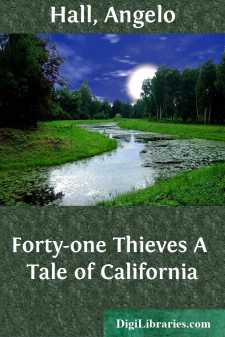Categories
- Antiques & Collectibles 13
- Architecture 36
- Art 48
- Bibles 22
- Biography & Autobiography 816
- Body, Mind & Spirit 145
- Business & Economics 28
- Children's Books 17
- Children's Fiction 14
- Computers 4
- Cooking 94
- Crafts & Hobbies 4
- Drama 346
- Education 58
- Family & Relationships 59
- Fiction 11834
- Foreign Language Study 3
- Games 19
- Gardening 17
- Health & Fitness 34
- History 1378
- House & Home 1
- Humor 147
- Juvenile Fiction 1873
- Juvenile Nonfiction 202
- Language Arts & Disciplines 89
- Law 16
- Literary Collections 686
- Literary Criticism 179
- Mathematics 13
- Medical 41
- Music 40
- Nature 179
- Non-Classifiable 1768
- Performing Arts 7
- Periodicals 1453
- Philosophy 66
- Photography 2
- Poetry 897
- Political Science 203
- Psychology 45
- Reference 154
- Religion 516
- Science 126
- Self-Help 85
- Social Science 82
- Sports & Recreation 34
- Study Aids 3
- Technology & Engineering 59
- Transportation 23
- Travel 463
- True Crime 29
Our website is made possible by displaying online advertisements to our visitors.
Please consider supporting us by disabling your ad blocker.
Forty-one Thieves A Tale of California
by: Angelo Hall
Categories:
Description:
Excerpt
Dead Men Tell No Tales
In the cemetery on the hill near the quiet village of Reedsville, Pennsylvania, you may find this inscription:
WILLIAM F. CUMMINSson of Col. William & Martha Cummins
who was killed by highwaymen near
Nevada City, California
September 1, 1879
aged 45 yrs. and 8 months
Be ye therefore also ready
For the Son of Man cometh
At an hour when ye think not.
It is a beautiful spot, on the road to Milroy. In former times a church stood in the middle of the grounds, and the stern old Presbyterian forefathers marched to meeting with muskets on their shoulders, for the country was infested with Indians. The swift stream at the foot of the hill, now supplying power for a grist-mill, was full of salmon that ran up through the Kishacoquillas from the blue Juniata. The savages begrudged the settlers these fish and the game that abounded in the rough mountains; but the settlers had come to cultivate the rich land extending for twelve miles between the mountain walls.
The form of many a Californian now rests in that cemetery on the hill. A few years after the burial of the murdered Cummins, the body of Henry Francis was gathered to his fathers, and, near by, lie the bodies of four of his brothers,—all Californians. The staid Amish farmers and their subdued women, in outlandish, Puritanical garb, pass along the road unstirred by the romance and glamour buried in those graves. Dead men tell no tales! Else there were no need that pen of mine should snatch from oblivion this tale of California.
More than thirty-five years have passed since my father, returning from the scene of Cummins' murder, related the circumstances. With Mat Bailey, the stage-driver, with whom Cummins had traveled that fatal day, he had ridden over the same road, had passed the large stump which had concealed the robbers, and had become almost an eye-witness of the whole affair. My father's rehearsal of it fired my youthful imagination. So it was like a return to the scenes of boyhood when, thirty-six years after the event, I, too, traveled the same road that Cummins had traveled and heard from the lips of Pete Sherwood, stage-driver of a later generation, the same thrilling story. The stump by the roadside had so far decayed as to have fallen over; but it needed little imagination to picture the whole tragedy. In Sacramento I looked up the files of the Daily Record Union, which on Sept. 3, 1879, two days after the event, gave a brief account of it. There was newspaper enterprise for you! An atrocious crime reported in a neighboring city two days afterward! Were such things too common to excite interest? Or was it felt that the recital of them did not tend to boom the great State of California?
CHAPTER II
On that fateful first of September, 1879, the stage left Graniteville, as usual, at six o'clock in the morning. Graniteville, in Eureka Township, Nevada County, is the Eureka South of early days. The stage still makes the daily trip over the mountains; but the glamour and romance of the gold fields have long since departed....


